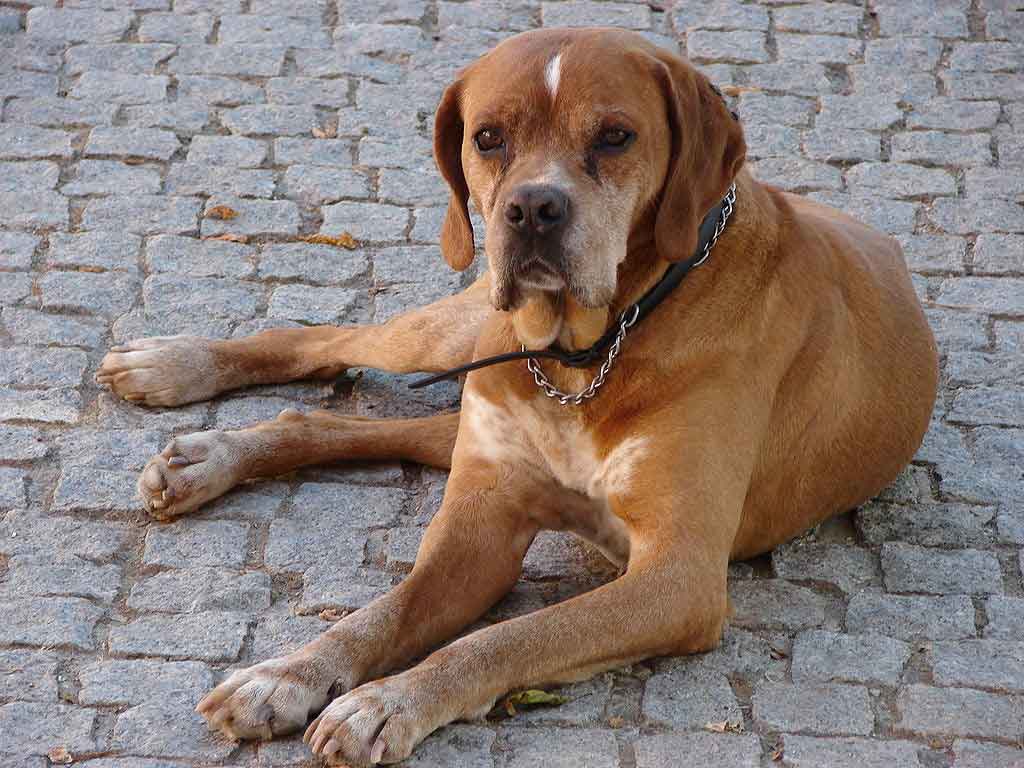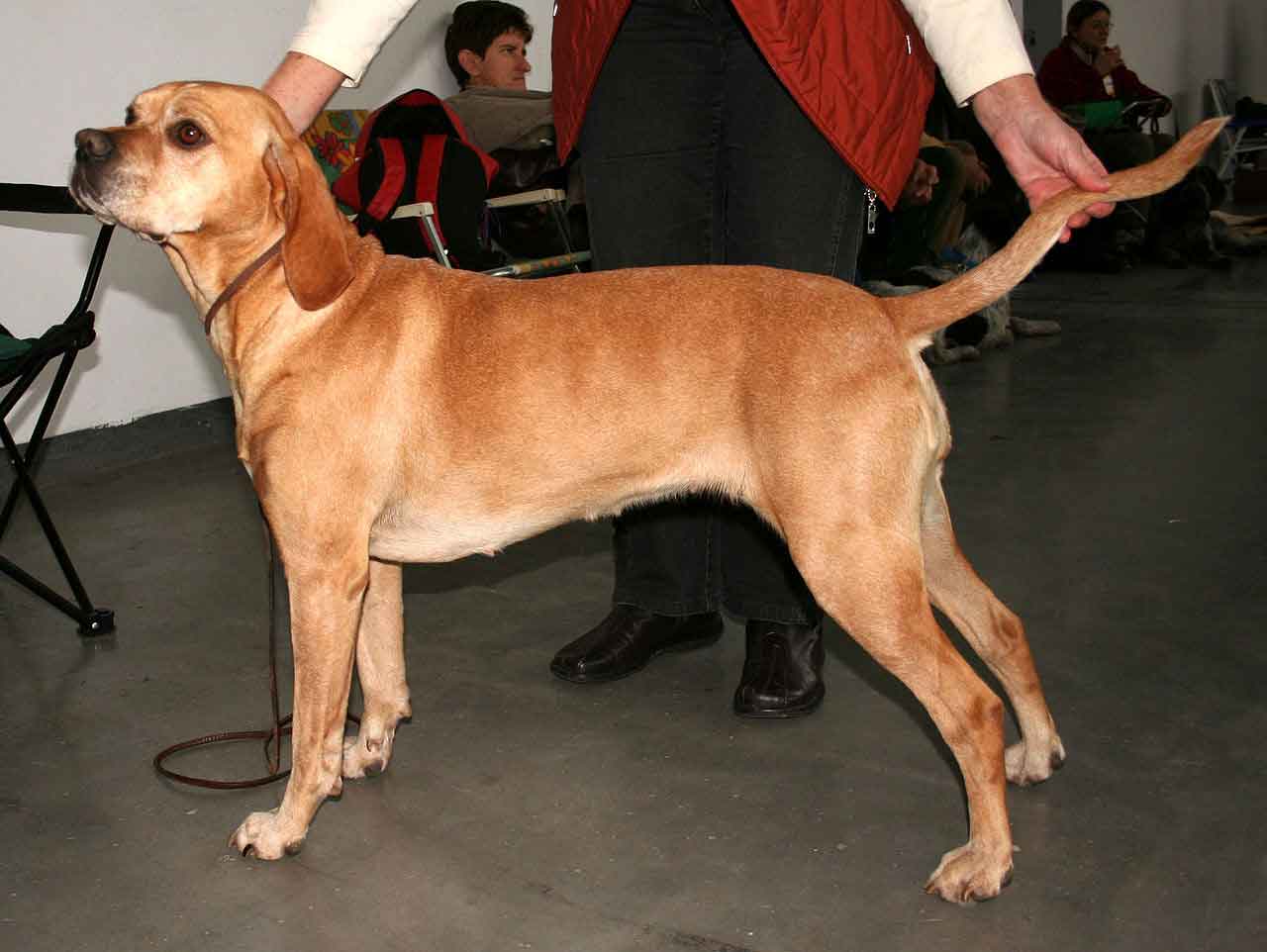Content |
|---|
Characteristics "Portuguese Pointer"
Coexistence is important that you have with your new friend. Before considering the acquisition of a dog of the breed "Portuguese Pointer" you know certain factors. Not all breeds of dogs are apt to live in an apartment, you must take into account his character, their need for exercise, their interaction with other pets, their care and if you have small children, their level of tolerance towards them.
Adaptation ⓘ4.0 out of 5 stars (based on 1 review)
|
friendly dog ⓘ2.0 out of 5 stars (based on 1 review)
|
hair loss ⓘ2.0 out of 5 stars (based on 1 review)
|
|---|---|---|
Affection level ⓘ5.0 out of 5 stars (based on 1 review)
|
Need for exercise ⓘ4.0 out of 5 stars (based on 1 review)
|
Social need ⓘ3.0 out of 5 stars (based on 1 review)
|
Home ⓘ4.0 out of 5 stars (based on 1 review)
|
Toilet ⓘ1.0 out of 5 stars (based on 1 review)
|
Friendly with strangers ⓘ2.0 out of 5 stars (based on 1 review)
|
barking ⓘ2.0 out of 5 stars (based on 1 review)
|
Health ⓘ2.0 out of 5 stars (based on 1 review)
|
Territorial ⓘ4.0 out of 5 stars (based on 1 review)
|
Cat friendly ⓘ2.0 out of 5 stars (based on 1 review)
|
Intelligence ⓘ3.0 out of 5 stars (based on 1 review)
|
Versatility ⓘ4.0 out of 5 stars (based on 1 review)
|
Child friendly ⓘ3.0 out of 5 stars (based on 1 review)
|
Surveillance ⓘ3.0 out of 5 stars (based on 1 review)
|
joy ⓘ2.0 out of 5 stars (based on 1 review)
|
History
The Portuguese Pointer arose from Perdigueiro Peninsular, an ancient breed of Iberian dogs, its presence is documented since the 10th century, Its first appearance in art is on a Visigothic-Arab tombstone of the Church of San Juan Bautista de Tomar. Its evolution was the result of several factors such as adaptation to the climate, the type of hunting, the terrain and the selection introduced through the Portuguese cultural specificity.
In the fourteenth century, It was bred in the royal kennels and used for hunting Altaria, being known as “Podengo de mostra”, showing already the possibility of stopping before the hunt. In the 16th century (reign of D. Sebastian) its use by the popular classes was common (although prohibited). The constant bleeding in the working arms caused by the discoveries, the abandonment of the fields, hunger and change of habits, led the population to resort more to hunting for food and, as a result, to the use of Pointing Dogs, that they were “prohibited” for causing, thanks to its excellent qualities, serious damage to the vested interests of the royal house and the nobility.
In the 18th century, Many English families established a presence in the Porto region in the business of wine production and came into contact with the breed being brought to England where it played an important role in the origin of the English Pointer.
At the end of the 19th century it suffered a certain decline, due to serious social upheavals and new tastes and contacts with the outside world, that gave projection to the foreign races that were then in fashion. But it is still represented in art objects (tinaja painted by D. Fernando II of Saxe-Coburg, Pena-Sintra), painting of King D.Luis and the princes in hunting clothes in the Palace of Ajuda, Lisbon), painting of a hunting trip of an Englishman in the Douro (Quinta de Gatão, Duero) or in artistic ceramics by the Real Fábrica do Rato (Pimenta Palace, Lisbon).
Only in 1920 some breeders strove to save the breed, locating some of the dogs in the inaccessible north of Portugal. The Portuguese pedigree book was then established in 1932 and the breed standard in 1938. For at least a thousand years, this dog always had the same square head, triangular ears and compact look.
Photo: “Portuguese Pointer” during the Dog World Show in Poznań. by Pleple2000, CC BY-SA 3.0, via Wikimedia Commons
Physical characteristics
The Portuguese Pointer comes in average proportions, straight, good guy, robust but with a harmonic conformation allied to the manifest elasticity of the movements.
The head is proportionate in relation to the body, well shaped and harmonious; seems to be big on the set. A little thick, However, it is neither bony nor thick and has loose and thin skin.
The coat is short and thick in most dogs., with a velvety texture on the ears and face .
Yellow in light varieties, common and dark, solid or white spotted on the head, the neck, chest and footwear.
In males, the height at the withers is 52 to 60 centimeters, the weight is 20 to 27 kg. In females the height is 48 to 56 centimeters and the weight is 16 to 22 kg.
Character and skills

The Portuguese Pointer he is an extremely gentle and affectionate dog, with great delivery capacity and very resistant. It is quiet, very sociable and a bit petulant in relation to other dogs. Works with vivacity and persistence and is curious by nature. He always keeps in touch with his hunter.
He moves with an easy step and is graceful. It is versatile in its function and very adaptable to various terrains, climates and types of hunting.
Extremely affectionate and very attached to children, it is also a very submissive dog. Can, for lack of education, do not obey gestures or orders. But, it's easy to train.
Health
The Portuguese Pointer has an average life expectancy of 14 years. It is considered a hardy breed with no specific health problems.. But, hip dysplasia, lunation of the patella, cancer and autoimmune diseases are potential health problems for dogs of this size.
Videos "Portuguese Pointer"
|
O Perdigueiro português, um cão polivalente
|
main characteristics of “Portuguese Pointer”
|
|---|
Type and recognitions:
- FCI CLASSIFICATION: 187
- Group 7: Pointing Dogs
- Section 1: Continental Pointing Dogs. 1.1 Braque Type. With proof of work..
Federations:
- – FCI – Group 7: Pointing Dogs. – Section 1: Continental Pointing Dogs. 1.1: Braque Type ⓘ
- – AKC – Bracco ⓘ
FCI breed standard "Portuguese Pointer"
Alternative names:
1. Perdigueiro Português, Portuguese Pointer Dog (English).
2. Perdigueiro Portugais (French).
3. Perdigueiro Português, Portugiesisch (German).
4. Perdigueiro português (Portuguese).
5. (Perdigueiro Português en portugués) (español).

